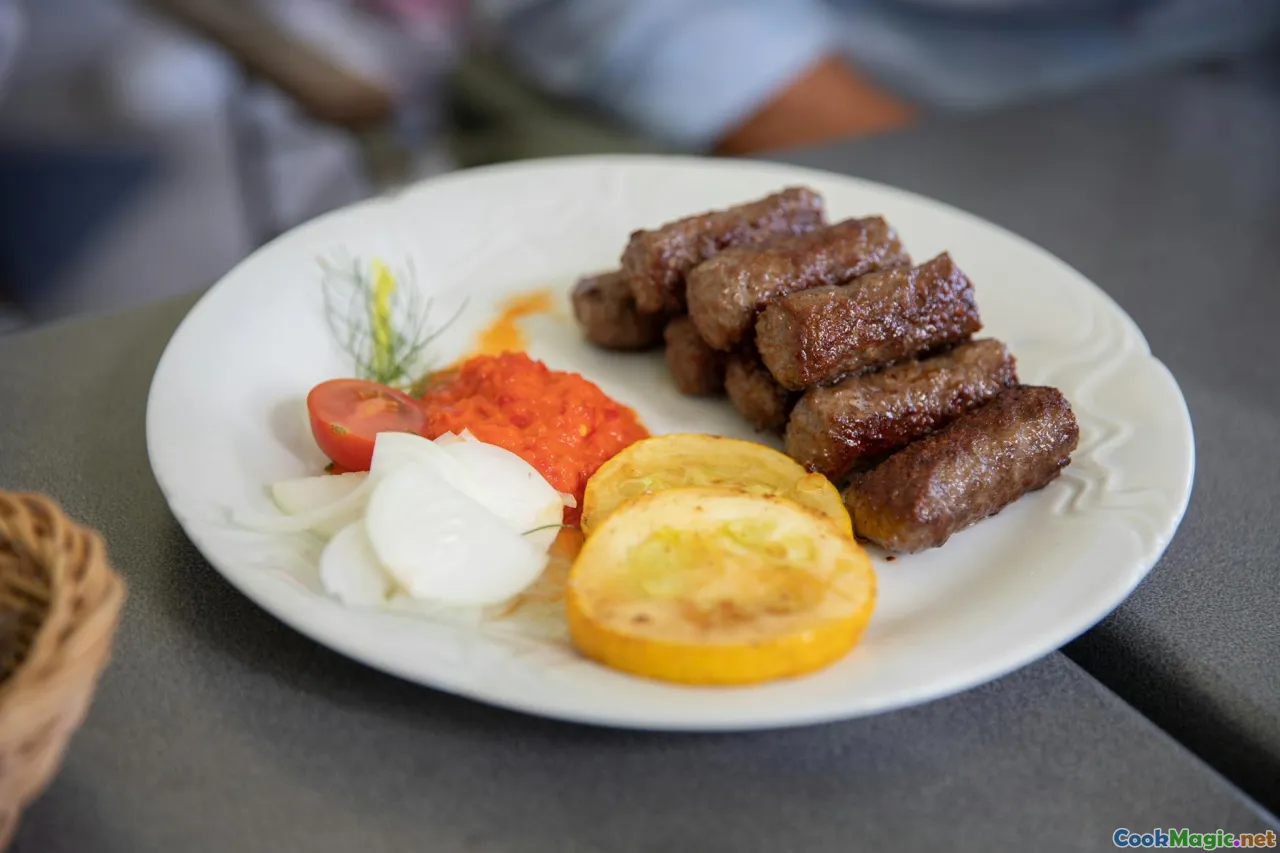Hidden Gems of Montenegrin Cuisine
8 min read Discover the lesser-known culinary treasures of Montenegro, from ancient recipes to unique local flavors that tell a story beyond the tourist trail. May 05, 2025 03:00
Hidden Gems of Montenegrin Cuisine
Montenegro, a land of rugged mountains, shimmering Adriatic coastlines, and centuries-old traditions, is often celebrated for its breathtaking scenery and vibrant culture. Yet, beneath its popular tourist spots lies a treasure trove of culinary delights—hidden gems that tell stories of history, geography, and local ingenuity. These lesser-known dishes and ingredients offer a profound glimpse into the soul of Montenegrin cuisine, inviting adventurous eaters to explore beyond the familiar.
An Introduction to Montenegrin Culinary Mystique
Montenegrin cuisine is a mosaic woven from influences of Mediterranean, Balkan, and Ottoman flavors. While dishes like Njeguski pršut (smoked ham) and Buzara (shellfish stew) garner international admiration, countless other culinary treasures remain under the radar—waiting to be discovered by those willing to venture off the beaten path.
Imagine wandering through narrow village streets, where the aroma of freshly baked bread mingles with the scent of wild herbs. Here, traditional recipes are preserved in family kitchens, passed down through generations, often without written recipes but with a shared love for local ingredients and authentic preparation methods.
The Cultural and Historical Tapestry
Montenegro’s rugged terrain and diverse climate have shaped its culinary identity. Mountain villages, with their hardy ingredients like cheese, cured meats, and root vegetables, contrast sharply with coastal towns where fresh seafood and citrus dominate. This geographical diversity fosters a rich palette of flavors, many of which are lesser-known outside local circles.
Historically, Montenegrin cuisine reflects a blend of resilience and resourcefulness—using what the land and sea offered. During Ottoman rule, spices and techniques infiltrated traditional dishes, creating a unique fusion. Meanwhile, the mountainous interior preserved ancient methods of smoking, fermenting, and fermenting that still define some of the most cherished local foods.
Unearthing Hidden Culinary Treasures
1. Kacamak – The Mountain’s Comfort Food
Kacamak is a rustic, hearty dish made from boiled cornmeal, often enriched with local cheese, butter, and sometimes wild herbs. Unlike its more famous counterparts in neighboring countries, Montenegrin kacamak carries a distinctive smoky aroma from being cooked slowly in traditional copper pots over wood fires. It’s a dish rooted in mountain life—a symbol of warmth and sustenance during harsh winters.
Eating kacamak is an experience in itself. The creamy texture, the richness of cheese, and the subtle smoky undertone create a comforting harmony on the palate. Many mountain villages still prepare it for communal gatherings, where stories are shared over steaming bowls of this simple yet profound dish.
2. Prosciutto from Njeguši – The Art of Smoke and Salt
While Montenegrin ham is gaining recognition, the Njeguški pršut remains a hidden gem known primarily to locals. Crafted in the village of Njeguši, this dry-cured ham is aged for months in mountain air, acquiring a deep, complex flavor profile—mildly smoky, richly salty, with a tender melt-in-the-mouth texture.
The secret lies in the traditional curing process—covered in sea salt, hung to dry in mountain air, and carefully smoked over beech wood. It pairs beautifully with fresh bread, local cheeses, and a glass of Loza (grape brandy), making it a centerpiece of Montenegrin gastronomy that deserves more international acclaim.
3. Wild Herb Pies – A Taste of Montenegro’s Flora
In the lush meadows and rocky hillsides, wild herbs such as jorgovan (lavender), zov (wild garlic), and kaper (capers) flourish. These herbs are often incorporated into traditional pies and pastries—pita filled with a mixture of wild herbs, eggs, and cheese.
The aroma of these pies is intoxicating—crisp, golden, with herbal notes that evoke the Montenegrin landscape itself. They are often served as street snacks or during festive gatherings, showcasing the country’s deep connection to its natural flora.
4. Seafood Specialties of the Hidden Coast
While Boka Kotorska and Budva are known for their seafood, smaller fishing villages harbor lesser-known delicacies. One such dish is Riblja Čorba, a hearty fish soup made from local catches like anchovies, sardines, and mackerel, simmered with wild herbs, garlic, and a splash of olive oil.
Serving this dish with fresh homemade bread creates an immersive sensory experience—the aroma of simmering fish with the scent of coastal herbs, the burst of flavors from the sea, and the rustic charm of seaside life.
Personal Reflections & Local Encounters
During my travels through Montenegro, I had the privilege of visiting small villages and meeting local artisans and cooks who keep these traditions alive. I remember sitting around a wood-fired hearth with a family in the mountain village of Lovoš, where a grandmother prepared kacamak with a gentle smile, sharing stories of how each ingredient was sourced from their own land.
In Njeguši, I watched a master curer meticulously inspect and hang each ham, explaining how the mountain air and traditional techniques create a flavor that can’t be replicated elsewhere. These moments reminded me that Montenegrin cuisine is more than just food—it's a reflection of resilience, community, and a profound respect for nature.
Why These Hidden Gems Matter
Exploring these lesser-known dishes offers more than just a culinary adventure; it’s a journey into Montenegro’s soul. They embody the country’s history, environment, and cultural plurality. By embracing these hidden treasures, travelers and food enthusiasts can contribute to preserving local traditions and supporting small-scale producers.
Final Thoughts
Montenegro’s culinary landscape is a vibrant tapestry woven from centuries of tradition, geography, and ingenuity. While its popular dishes and renowned wines draw the spotlight, the true essence lies in its lesser-known gems—each with a story, a heritage, and an unforgettable flavor.
So next time you find yourself wandering through Montenegro’s rugged mountains or tranquil coastal villages, seek out these hidden culinary treasures. Your palate—and the spirit of Montenegrin culture—will thank you for it.









